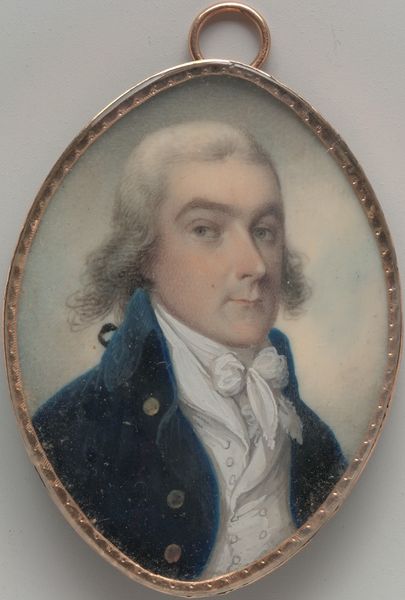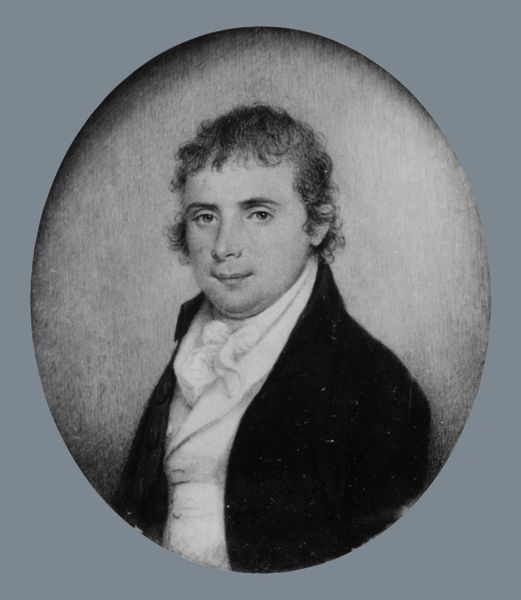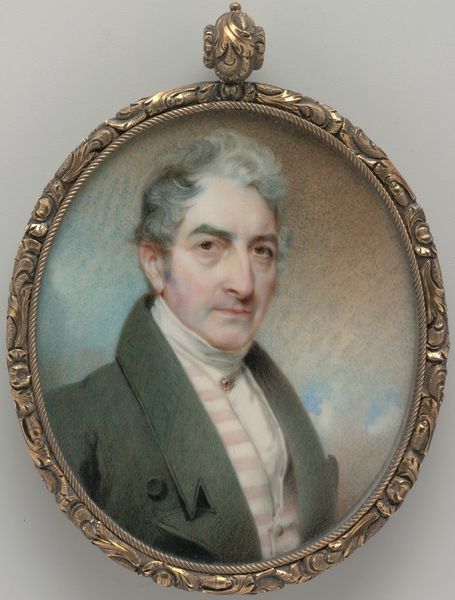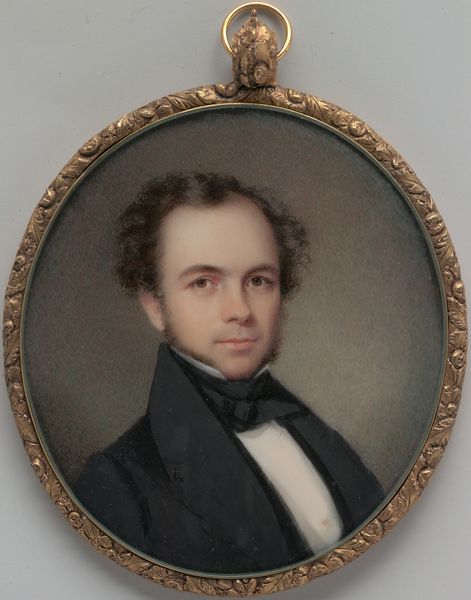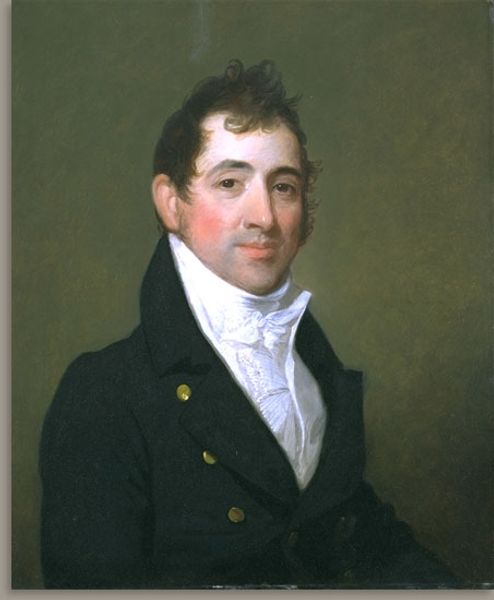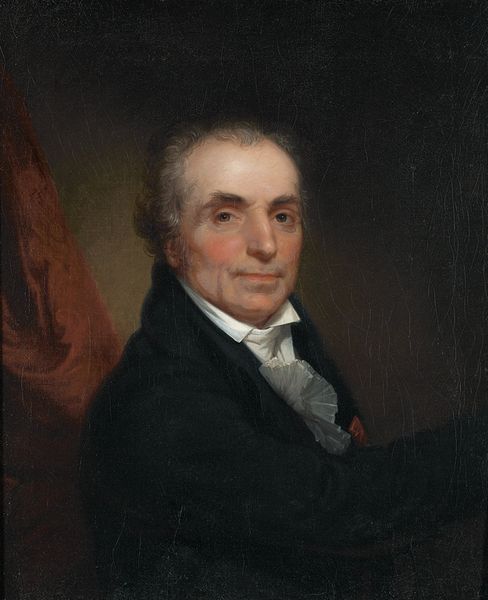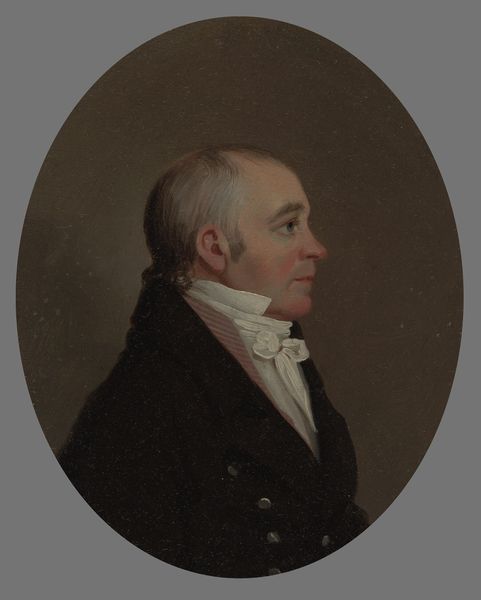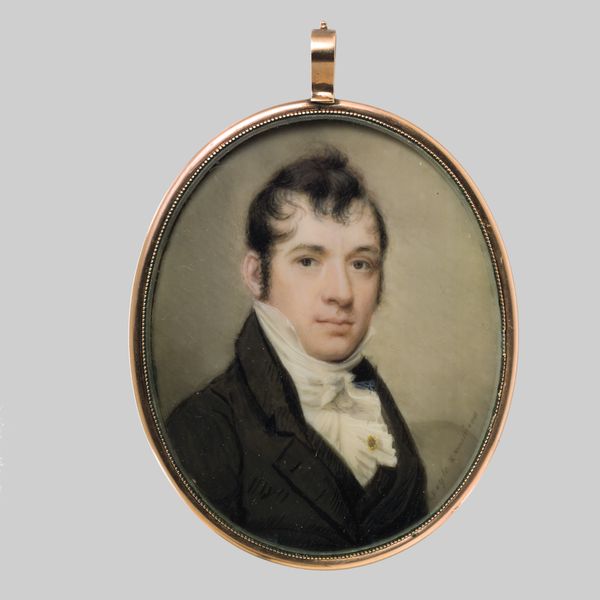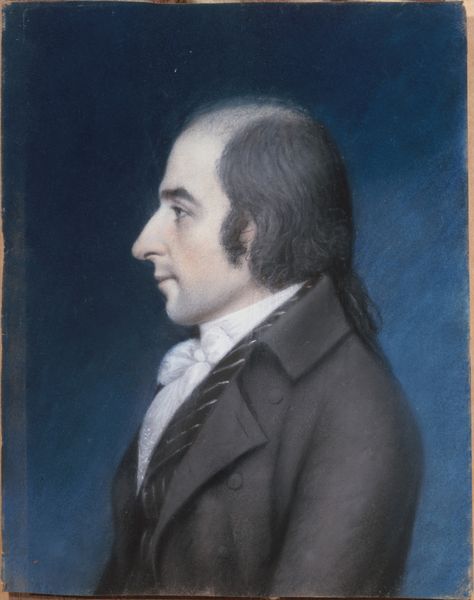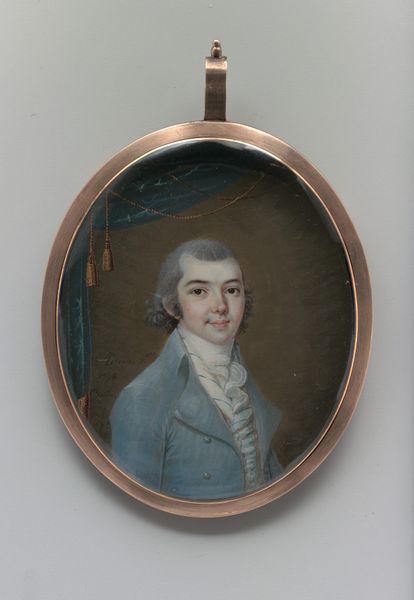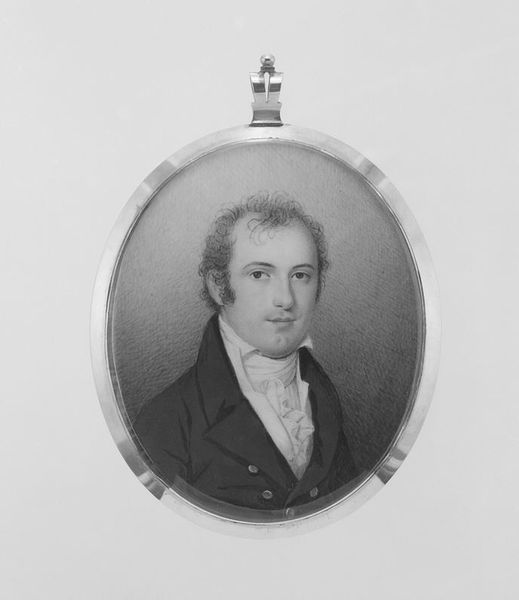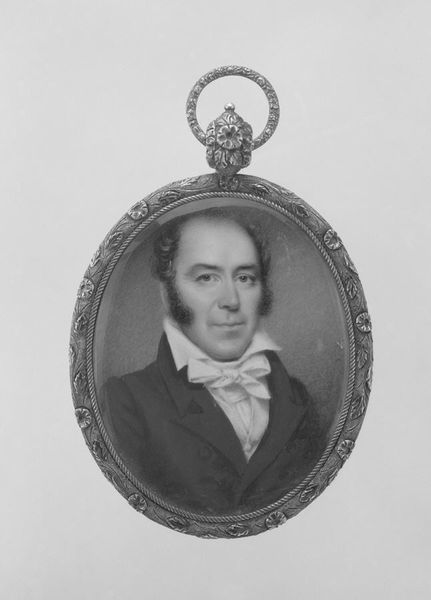
painting, watercolor
#
portrait
#
painting
#
watercolor
#
romanticism
#
men
#
miniature
Dimensions: 3 9/16 x 2 15/16 in. (9.1 x 7.5 cm)
Copyright: Public Domain
Curator: This is Charles Fraser's miniature portrait of Colonel James Elliott McPherson, created in 1819. It's rendered in watercolor. What are your initial thoughts? Editor: It's quite striking. The dark coat against the paler background makes his face the focal point. There's a hint of Romanticism here, maybe in the idealized, slightly softened features. Curator: I'm immediately drawn to the painstaking technique involved in creating such fine detail at this scale. Fraser must have used incredibly small brushes and had exceptional control to capture the textures and shading so accurately. What social factors might be in play to promote this work of art? Editor: The colonel’s posture, the expensive materials, and his determined stare denote confidence. This isn't just a likeness; it's a statement of power and privilege in the young United States, particularly considering his role. Whose labor enabled the work's creation, ownership, and distribution should also be part of our conversation. Curator: Absolutely. And let's not forget the social context of portrait miniatures. They were often commissioned as intimate keepsakes, tokens of affection, or symbols of social status exchanged among the elite. The gold frame adds to the object's value and speaks to its function as both art and accessory. What implications were in the practice of using this miniature? Editor: Well, portraits of colonels are already fraught with the potential glorification of military action. What did his rank mean to his identity? Also, how does a miniature painting intersect with larger discourses of identity? Was this portrait also meant to communicate belonging to an exclusive, perhaps even racially homogenous social stratum? Curator: The limitations imposed by such a small format and the watercolor medium challenge the traditional hierarchy of painting. Its very intimacy, made accessible in the space of a handheld object, allows us to observe social and cultural life more closely. Editor: It's a delicate dance of historical context, material artistry, and potential re-interpretation that prompts further engagement and questions from the viewer. Curator: A valuable object lesson in looking beyond first impressions to deepen your knowledge of what art objects mean. Editor: Indeed. Seeing is only the start of truly understanding.
Comments
No comments
Be the first to comment and join the conversation on the ultimate creative platform.
